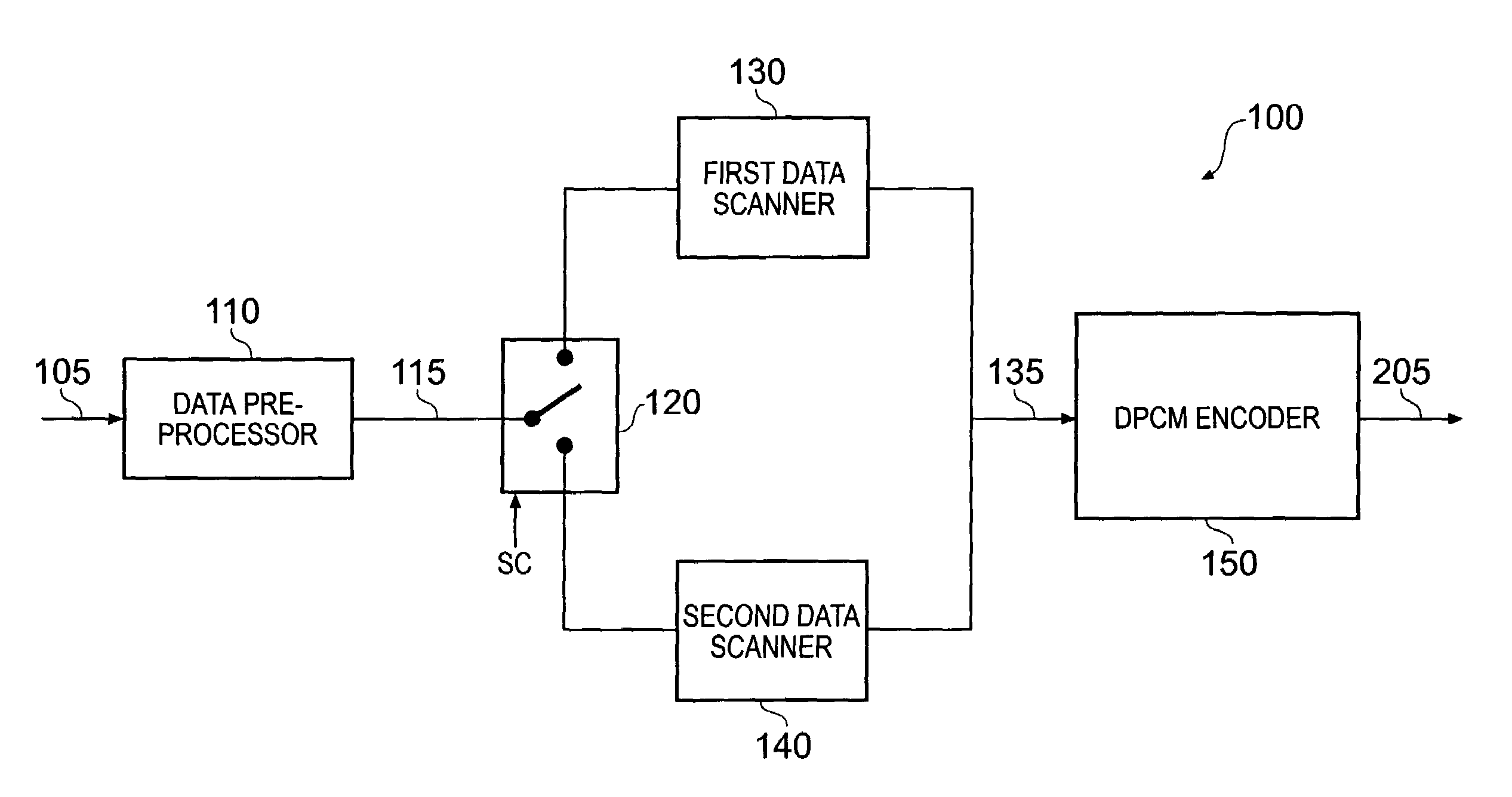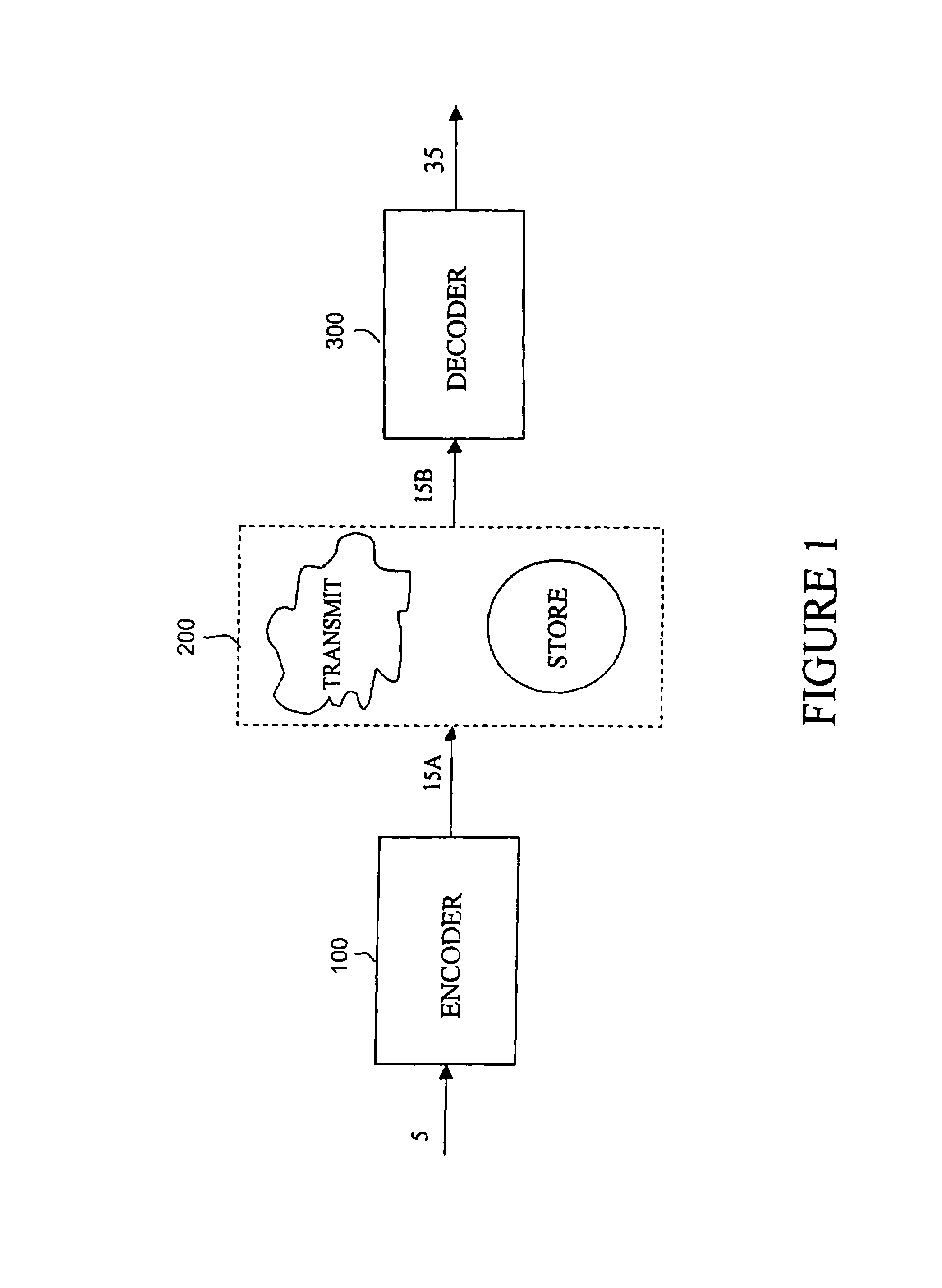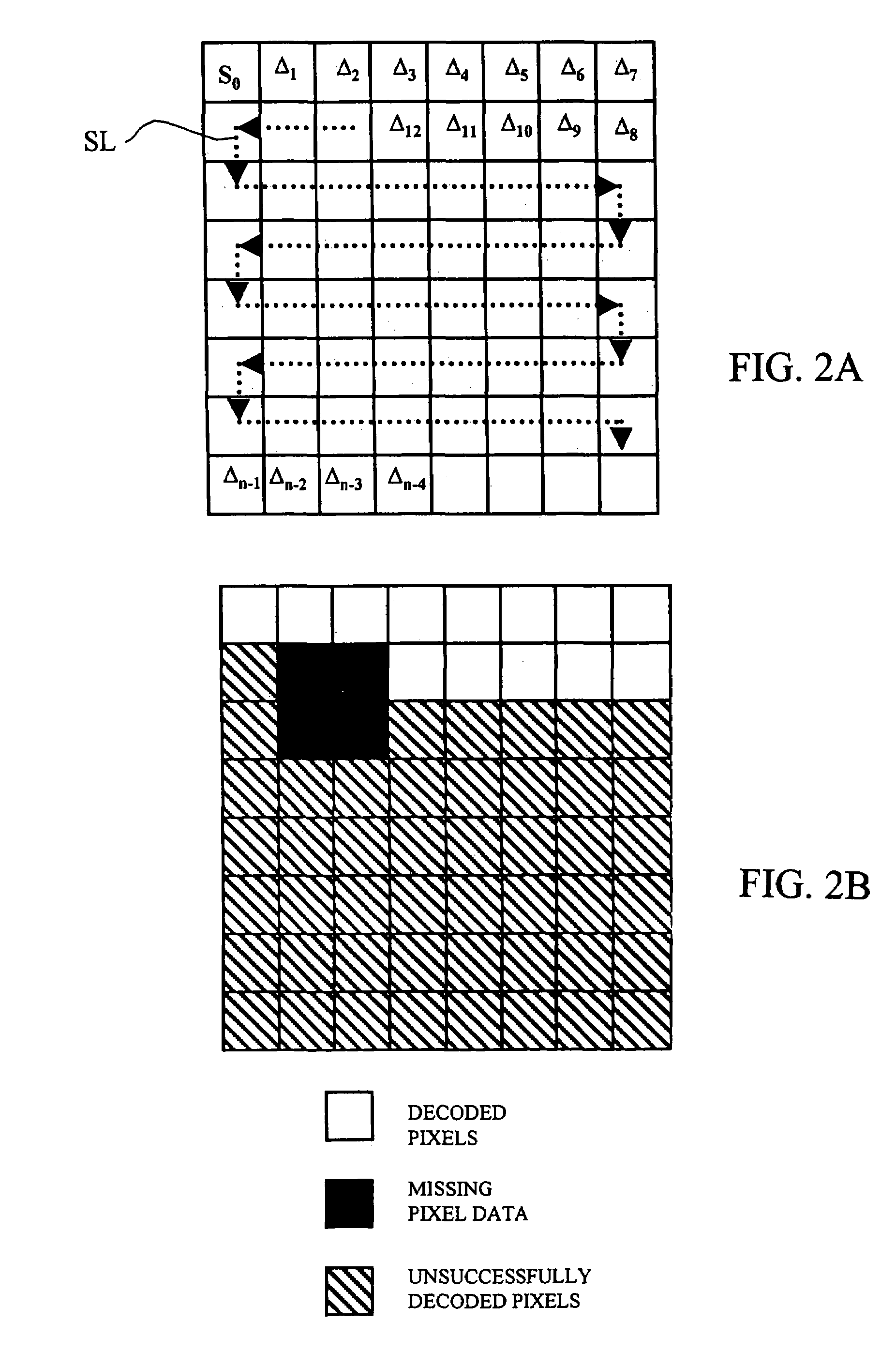Differential encoding
- Summary
- Abstract
- Description
- Claims
- Application Information
AI Technical Summary
Benefits of technology
Problems solved by technology
Method used
Image
Examples
second embodiment
[0077]FIG. 9 schematically illustrates a decoder. In this embodiment, validity data is stored with the pixel data indicating whether the pixels have been correctly decoded. This validity data is used to control whether a newly decoded pixel should be stored in the frame stores, or whether a corresponding pixel from a previous field or frame should be used instead.
[0078]In this embodiment the DPCM decoder 210′ generates two outputs: pixel data and associated validity data indicating whether the pixel data was correctly decoded from the input data stream. The pixel data is supplied to a multiplexer, 230′, and the validity data is supplied to control logic 310 which controls the operation of the multiplexer 230′. The multiplexer 230′ receives, as a second input, fed-back pixel data from a set of frame stores 320, and the control logic 310 receives, as a second input, fed-back validity data from the frame stores 320.
[0079]The fed-back pixel and validity data are derived from correspondi...
third embodiment
[0092]FIG. 15 schematically illustrates decoder. In many respects this is similar in operation to the decoder of FIG. 9, and so only the differences will be described.
[0093]As part of the fed-back data associated with each pixel, a timestamp is also provided. Timestamps were mentioned above, and their storage in association with the pixel data was described. The purpose of the timestamp is to allow the system to limit number of frames over which a pixel is re-used. Basically, the timestamp can take one of two main forms: (a) an indication of the field or frame at which that pixel was first stored in the frame store 320, or (b) a running counter, incremented each frame, showing how long that pixel has been stored. In the first case, the timestamp can be compared with a current time to determine how long a pixel has been re-used. In the second case, which is the preferred embodiment to be described here, the timestamp starts at zero, is incremented each time a pixel is re-stored, and ...
PUM
 Login to View More
Login to View More Abstract
Description
Claims
Application Information
 Login to View More
Login to View More - R&D
- Intellectual Property
- Life Sciences
- Materials
- Tech Scout
- Unparalleled Data Quality
- Higher Quality Content
- 60% Fewer Hallucinations
Browse by: Latest US Patents, China's latest patents, Technical Efficacy Thesaurus, Application Domain, Technology Topic, Popular Technical Reports.
© 2025 PatSnap. All rights reserved.Legal|Privacy policy|Modern Slavery Act Transparency Statement|Sitemap|About US| Contact US: help@patsnap.com



